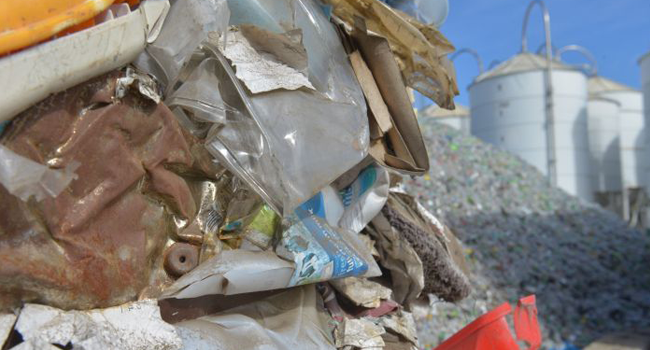The October mill buying period brought a drop in ferrous scrap prices, ending a two-month streak of rising prices. In October, mills paid from $25 to $45 less per ton for ferrous scrap on average.
According to pricing survey data of the Raw Material Data Aggregation Service (RMDAS), compiled by Management Science Associates’ (MSA), Pittsburgh, prompt grades (new production scrap consisting of #1 busheling, #1 bundles and #1 factory bundles) lost $45 per ton in value in the average transaction in October compared to the month before. Shredded and No. 1 heavy melting steel (HMS) scrap decreased from $9 to $30 per ton in value in the three regions tracked by RMDAS. (Click here to view RMDAS’ October figures)
The prompt industrial composite grades fell below $400 per ton in value for the first time since the first quarter of 2010. No. 2 shredded scrap, meanwhile, dropped to a national average price of $342 per ton, its lowest point since July of 2010.
October’s pricing was more consistent across all three regions than it had been in most previous months in 2010. All three of the benchmark grades tracked by RMDAS traded within a $9 per ton average range in each of the three RMDAS regions.
Ferrous scrap recyclers contacted in mid- and late September had seen the October price drop as likely. Recyclers said the volume of actually mill buying was muted in early October, and mills made offers to buy scrap at lower prices than many shippers were willing to match.
Looking toward the next buying period, some ferrous scrap recyclers anticipate the opposite scenario: that this time opportunistic buyers will come into the market now that pricing has dipped. Such a scenario includes export brokers as a key component.
Concerns remain focused on the supply side for many recyclers. A scrap buyer in the Great Lakes region says auto dismantlers he has met with in October are seeing very few vehicles entering the automotive recycling and scrap stream. As heads of household stretch their incomes and try to bank some savings, one of the techniques is to coax a couple of more years out of older vehicles, the recycler speculates.
Figures from the World Steel Association (Worldsteel), Brussels, continue to show a global steel industry that is tapering down its overall production. Information gathered from 66 nations by Worldsteel shows global production declining for the second straight month.
Globally, production dropped from 114.8 million metric tons in July 2010 to 112.9 million metric tons in August and then to 111.7 million metric tons in September.
China was particularly less active, with its mills producing 48.0 million metric tons of steel in September, down from 51.6 million metric tons in August.
Several other nations helped make up for China’s September reduction in output by ramping back up after a slower August. Mills in the European Union in particularly were more active, moving from 12.1 million metric tons produced in August to 14.3 million metric tons produced in September.
Production in the United States slipped back in September, declining from 6.9 million metric tons in August to 6.6 million metric tons in September. Figures from the American Iron and Steel Institute (AISI) for the week ending October 16, 2010, show domestic raw steel production at slightly less than 1.5 million short tons with a mill capability utilization rate of 62.3 percent. Production for that week was down 1.3 percent from the previous week (ending October 9, 2010), when production was at 1.65 million short tons and the rate of capability utilization was at a stronger 68.3 percent.
The Raw Material Data Aggregation Service (RMDAS) Ferrous Scrap Price Index is based on data gathered from a statistically significant compilation of verified ferrous scrap purchase transactions.
RMDAS is a service of Management Science Associates Inc. (MSA), Pittsburgh. Those seeking more information about RMDAS can contact MSA’s Jeralyn Brown at 724-265-6574 or via e-mail at [email protected].
Source : www.recyclingtoday.com





